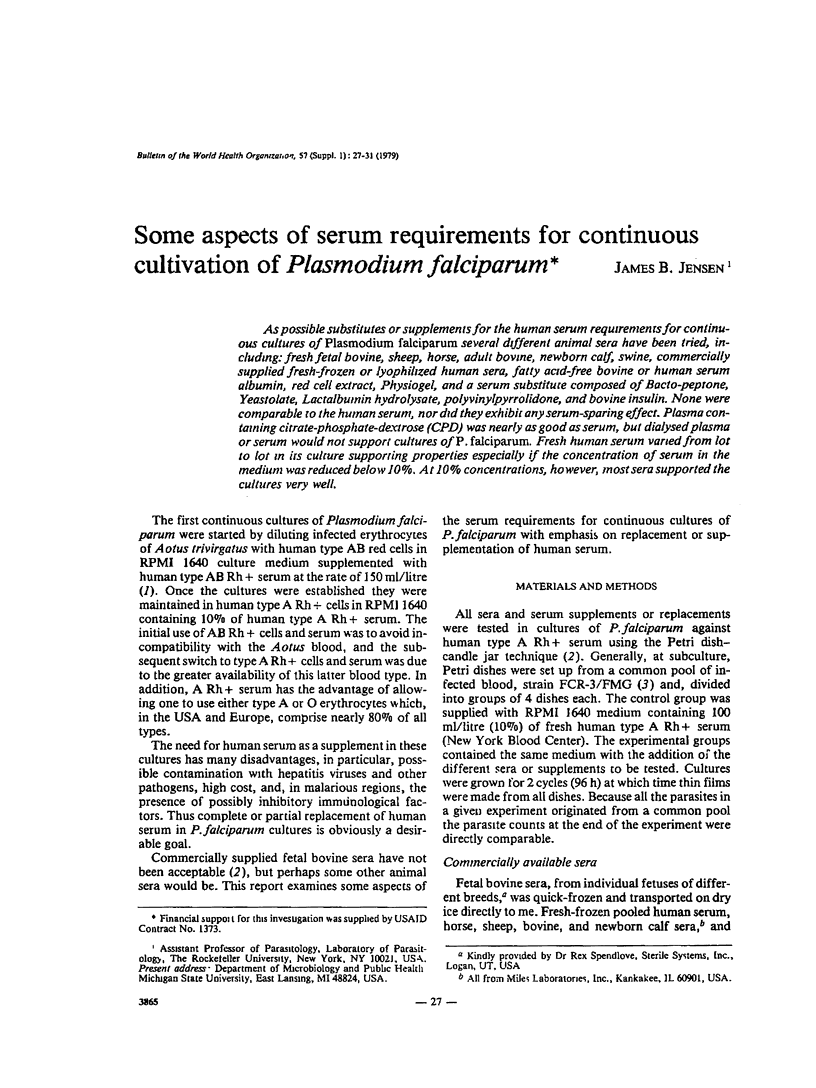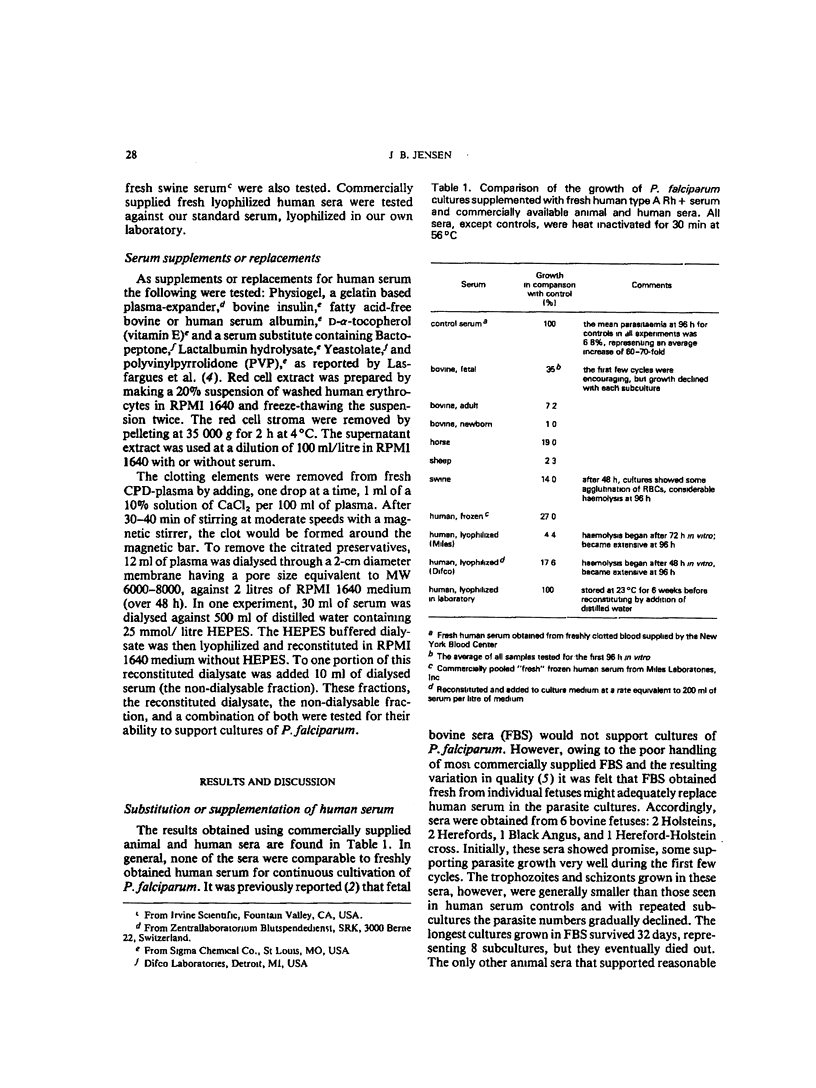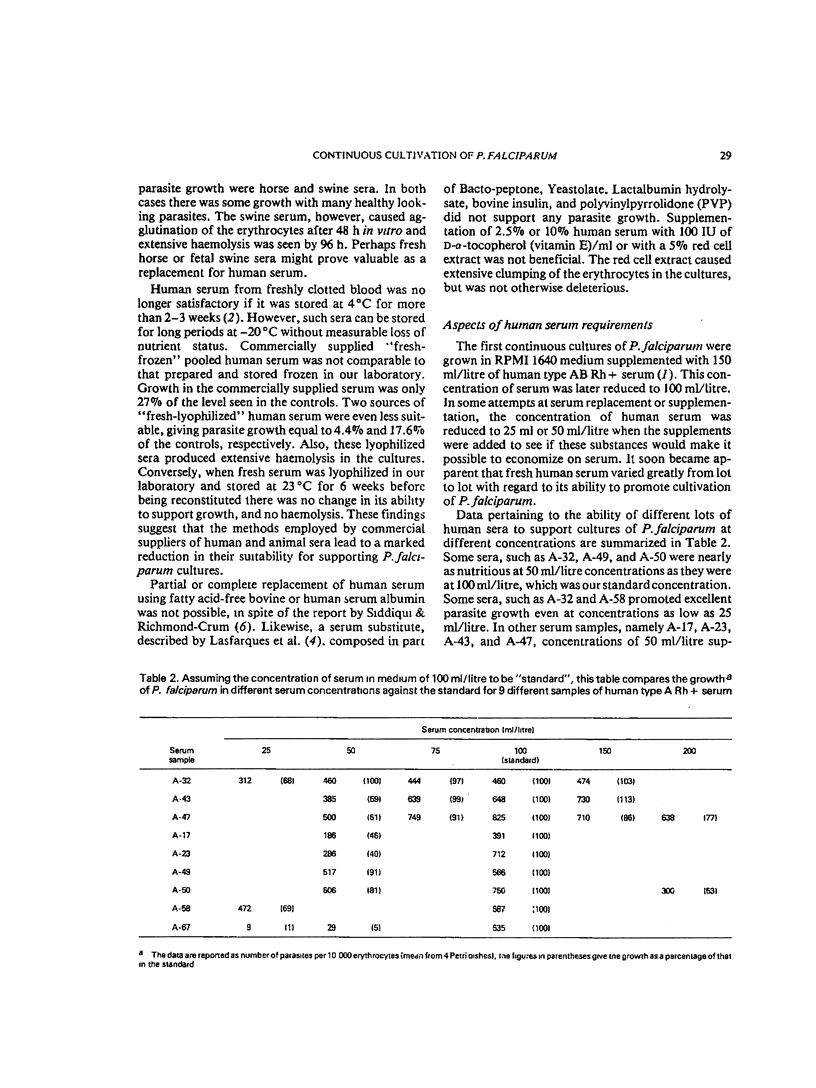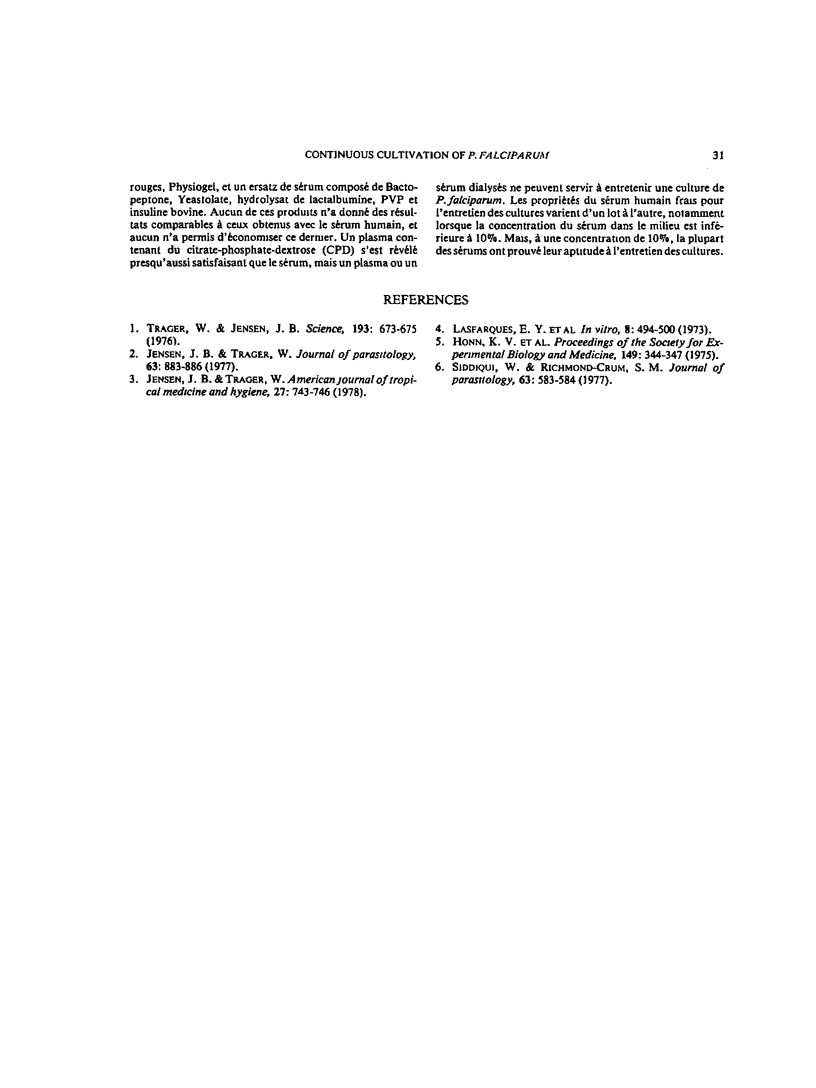Abstract
As possible substitutes or supplements for the human serum requirements for continuous cultures of Plasmodium falciparum several different animal sera have been tried, including: fresh fetal bovine, sheep, horse, adult bovine, newborn calf, swine, commercially supplied fresh-frozen or lyophilized human sera, fatty acid-free bovine or human serum albumin, red cell extract, Physiogel, and a serum substitute composed of Bacto-peptone, Yeastolate, Lactalbumin hydrolysate, polyvinylpyrrolidone, and bovine insulin. None were comparable to the human serum, nor did they exhibit any serum-sparing effect. Plasma containing citrate-phosphate-dextrose (CPD) was nearly as good as serum, but dialysed plasma or serum would not support cultures of P. falciparum. Fresh human serum varied from lot to lot in its culture supporting properties especially if the concentration of serum in the medium was reduced below 10%. At 10% concentrations, however, most sera supported the cultures very well.
Full text
PDF




Selected References
These references are in PubMed. This may not be the complete list of references from this article.
- Jensen J. B., Trager W. Plasmodium falciparum in culture: establishment of additional strains. Am J Trop Med Hyg. 1978 Jul;27(4):743–746. doi: 10.4269/ajtmh.1978.27.743. [DOI] [PubMed] [Google Scholar]
- Siddiqui W. A., Richmond-Crum S. M. Fatty acid-free bovine albumin as plasma replacement for in vitro cultivation of Plasmodium falciparum. J Parasitol. 1977 Jun;63(3):583–584. [PubMed] [Google Scholar]
- Trager W., Jensen J. B. Human malaria parasites in continuous culture. Science. 1976 Aug 20;193(4254):673–675. doi: 10.1126/science.781840. [DOI] [PubMed] [Google Scholar]


